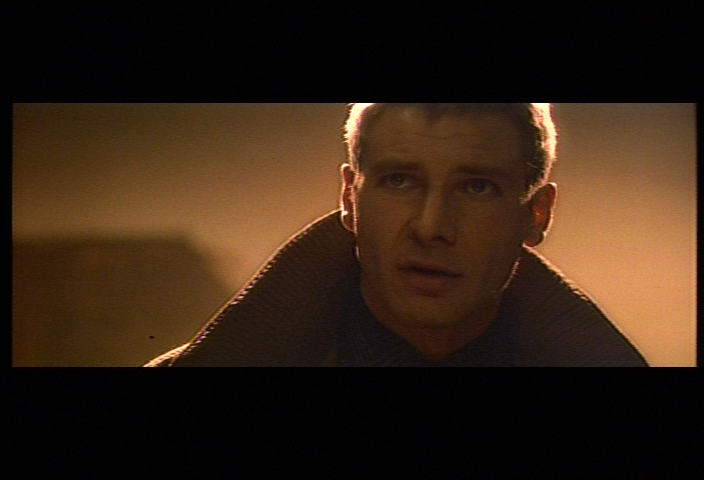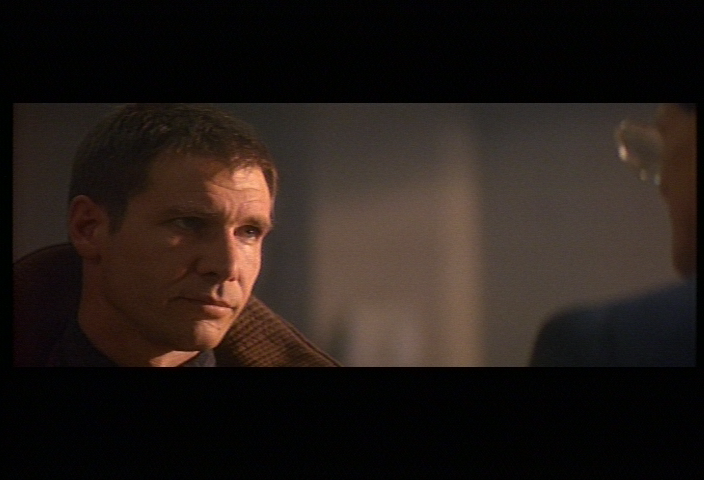It's been a while since I've read anything about Laserdisc conversion. Considering all the new hardware and software out there, can someone with experience recommend whether it is currently better to capture into a computer using software or just hookup my Laserdisc player to a DVD recorder? Since there's no copy protection on Laserdiscs I would think it would be the easiest way to do this. I've got a Pioneer with standard RCA video, S-VHS and component video output. The component video probably gives the best video output, but there's no corresponding input on a DVD recorder and I remember reading somewhere that S-VHS doesn't seem to give better ouput for Laserdiscs than a standard Video connection. Appreciate any help on this. Thanx!
+ Reply to Thread
Results 1 to 4 of 4
-
-
I won't go into great detail, I'll just list general suggestions. There's some snapshots included to help give you an idea what to expect with your work. Bare in mind that many changes have taken place since several years, at least in one of the links I posted, below. Anyway. I hope the info helps, if not is insparational

. . .
Well, for laserdisc transfers, you really want to match the right analog capture card to a laserdisc player. I've stumpled my way in this endeavor for a while and found various pros and cons, so here's what I have so far:
I came to the final conclusion that the right capture card for this source medium was the:
Winfast TV-2000 XP (expert) model. I picked one up at a local computer shop for around $75 dollars, I think, and I picked up a Laserdisc player on ebay for around $100 dollars, again, I think. I forget such things since they are not that important.
. . .
Capture card..
This card had the best comb filter around. The comb filter is activated only during composite connections, not s-video. That goes for any other equipment sporting such a feature.
What you want to do first is determine what your laserdisc player offers: composite or s-video, but it is highly recommended to use the composite connections off the unit and the capture card. Don't be tempted to use the s-video, as it is not a good output performer on the player, as they exhibit lots of chroma noise this way.
Then, review your capture cards internal features and capabilities..ie, does it come with a 2-D comb filter or a decent comb filter, or does it offer some other(s) internal features benificial to the card and your video needs.
Personally, I go with the comb filter. Anything that says something about a cards comb filter is prob a good card: use it.
Laserdisc player..
There are many such players, models, brands, etc. But the good ones were mainly Pioneer. I hope you have such a brand. But if not, that is ok. You work with what you have and make the best out of it. I have the:
Pioneer CLD-V2600 model. It was an industrial model if that matters. The quality from this model is imho, exceptional, when coupled with the right capture card and connectors.
Some snapshots I made that came out of this unit..

** FRAME: 1152, 704x480 winfast capture via composite connections

** FRAME: 3314, 704x480 winfast capture via composite connections

** FRAME: 3438, 704x480 winfast capture via composite connections
--> Black Level setup -- Dr_layne; Apr 22, 2008
* Note: these pics were based off a capture made with the lossless huffy codec:
* laserdisc -> winfast[huffy 704x480] -> avi
Editing/preprocessing..
Just the basics. Depending on your obtained transfer source, you may need to review it for signs of artifacts or noise or whatever you think might be problems. You also want to know (ahead of time) if your laserdisc if Movie based or Video.
A) If Video, it will be 29.970 fps, with every frame showing interlace fields
B) if Movie or Film, it will be telecined video at 29.970 fps, with every frame showing 3 progressive frames, 2 Interlaced frames, otherwise known as 3:2 cadence.
In option {A}, you should eaily determine that every frame is interlaced. You option is mainly to process as-is, but if you have intentions of viewing on a computer monitor, you may consider the option to deinterlace. There are lots of deinterlace methods and applicatios, with the best ones prob through AVIsynth scripting.
In option {B}, you will have to determing if the source show these consistant 3:2 cadence patterns I mentioned about, though it may prove time consuming in some cases. It might be wiser to find the first 3:2 pattern and start your ivtc function at that place in the video and then scan through your video inside a timeline to review for any signs of breakage. This will be seen as interlace frame slipping in. When (if) this happens, then your source could have a) dropped frames or b) source was mastered that way on the disc. Your only alternative is to find the best ivtc plugin filter that does the <stitching> of those areas automatically but still keeping it at the original intended goal of restoring back to 24p frame rate.
When you are ready to encode this (assuming a script in the above passage) you feed it to your mpeg encoder and set your encoder to inverse telecine and apply the 3:2 flags.
In many cases where the laserdisc is film base: telecine, they are usually consistant in their 3:2 pattern. You souldn't have much problems running most ivtc applications. When used on a consistant 3:2 pattern, my favorite one is AVIsynth's:
--> SeparateFields().SelectEvery( 10, 0,1,2,3,4,5,6, 9).weave()
I will use the above and then look for any breakage in the pattern (for signs of interlace frames) and review for a plan of acition: use an automated ivtc vs. continue after each break, etc.
DVD Recorder..
I can't speak for dvd recorders and laserdisc because I can't recall ever trying that combination. It would certainly be easier and quicker to complete a transfer project(s) with this setup but then you would straddled with that formats weakness: compression, and Film processing.
If the content is Film based, then you have the advantage of restoring telecined video back to 24p framerate vs. keeping it at 29.970 fps frame rate. The risk is that if kept at the "captured" telecine framerate then there is the possibility of mpeg artifacts, etc., because of the limited bitrate. And, the amount of artifacts seen depends on the amount of bitrate (and the movie content, as well as the equipments) you assigned to the dvd recorder for the recording. That's why it is recommended to capture to a lossless codec if the content is priceless or worth the effort to put into it. The example below shows what is possible but your mileage will certainly vary. If you are not versed enought in the things of analog caturing, and codec, and editing, and so on, you might just end up doing it the dvd recorder way. So, there's decisions to think about.
There is an 11 pages link (below) where one of the members (gshelley61) used a dvd recorder (and a detailer: equipment) to clean up the image, I think. Anyway.. there's some snapshot pics of the work he did with the Blade Runner Criterion laserdisc version.
--> JVC DR-M10SL user's thread: techniques and tips -- by gshelley61; July 12, 2004
On the fist page, he used a laserdisc of one of the Star Wars discs, below: a snipplet..
I used a Pioneer CLD-D704 laserdisc player with the Variable DNR on, composite output into a Sima SCC Pro Color Correcter to sharpen and adjust color/contrast/brightness; then composite in to the JVC DVD recorder. I captured to a DVD-RW in FR Mode set at 1 hour 50 minutes.
Conclusions:
It all boils down to how good you want your transfers to be, and how much time you are willing to put into these kinds of projects. These are all compremises we make every day. Most don't want to go the long haul so sooner or later they bite the bullet and take the easier ride. A dvd recorder is not so bad, and they can do a pretty good job on lots of video mediums, but that also depends on the brand/make/model/etc., too. But there is much more too all this than what I've generalized in the above info.
Good luck.
From the video workstation of,
-vhelp 4999 -
FWIW: All laserdics were encoded composite (NTSC or PAL) so unlike native Y/C component VHS, BetaMax, U-Matic, etc. or native YUV component Betacam, MII, etc. you should capture laserdisc as composite to a quality comb filter for Y/C separation and then UV decoding. Do not use the S-Video connector if it exists.
Audio differs by disc but is well documented on the jacket. You get analog stereo or analog stereo with Dolby B/C plus in some later pressings 8 bit PCM stereo or AC-3 (2.0 or 5.1). Digital audio compatible players will have the S/PDIF coax and/or optical connector.Recommends: Kiva.org - Loans that change lives.
http://www.kiva.org/about -
Thanx, guys! Those are great guidance. I probably will go the DVD recorder route and appreciate the confirmation that the S-VHS connector is not recommended.
Similar Threads
-
Your conversion recommendations ?
By PowerFalcon in forum Video ConversionReplies: 3Last Post: 25th Dec 2011, 20:25 -
home movie film conversion recommendations?
By spiritgumm in forum Off topicReplies: 0Last Post: 6th Nov 2010, 10:04 -
TS to DVD Conversion Recommendations
By johnnyquid in forum Video ConversionReplies: 1Last Post: 25th Jul 2010, 17:08 -
What's up with ffmpegx (current and 1.0.0)
By TryNiX in forum ffmpegX general discussionReplies: 5Last Post: 15th Apr 2009, 14:46 -
Newbie post - Recommendations for VHS-DVD Conversion.
By Mysticle31 in forum RestorationReplies: 20Last Post: 8th Jul 2008, 01:51




 Quote
Quote